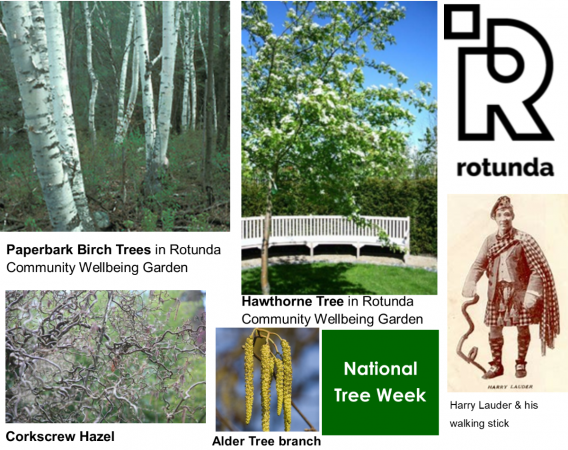National Tree Week

Notes From The Garden
By Terry Reilly - Rotunda's Head Gardener
It’s National Tree Week. Who knew there was such a thing?
Not me anyway. But now I do, I know it’s “the UK's largest annual tree celebration, marking the start of the winter tree planting season.” And one of the many things it is designed to do is to increase our awareness of the importance of trees. Many events are taking place around the country, many involving schoolchildren, to encourage the planting of trees. It will take billions to make a difference, but a difference must be made as they are an invaluable tool to help fight climate change as well as promoting health and well-being by making the environment a more beautiful and relaxing place.
The winter planting season? Who knew? Well I knew that one. In order for trees and shrubs to be planted successfully during the warmer months, they have to be container-grown. But from November to March you can buy them “bare root” from a tree nursery (J.A. Jones from Southport, for example), and they are usually half price or less. You have to order them in advance: you can also get them at this time of year via the internet, mail order etc.
Well here at the Rotunda we’re not doing an event this week. But we have done loads in the past and we will do loads in the future, both in our gardens and in our local area. So I thought I’d draw your attention to some interesting snippets about some of the trees we have planted in and around our gardens and woodland.
- Hawthorn
The Hawthorn, or ”May Tree”, is the centrepiece of the circular lawn in our community gardens. Its alternative name goes way back into history and was thus named because it used to be in flower at the beginning of May. But with the adoption of the Gregorian calendar in the mid-18th century, the 1st arrived nearly two weeks later; and now the hawthorn flowers mid-may to mid-June.
In the Celtic countries it was widely believed that it was both a portal and a refuge for fairies and that it was veryunlucky to cut one down.
- Alder
We have at least a dozen of these trees in our woodland. They can come into flower as early as January and provide a splendid show of cascading flowers through the spring. These can be up to six inches long and spread clouds of pollen throughout the woodland.
This is well worth seeing, but with a caveat. Although not common, many people are allergic to alder pollen. And though (unlike nut allergies) it’s not likely to be fatal, it is very unpleasant, having symptoms not unlike severe hay fever: sneezing; runny or stuffy nose; watery and itchy eyes; itchy sinuses, throat, or ear canals; and
ear-congestion.
People who are allergic to alder are also likely to be have reactions to birch and hazel pollen, whose catkins are similar in appearance but less spectacular, flowering in March.
- Birch
We have two types in the gardens: Silver Birch and the less well-known but showier Paperbark Birch, pictured below.
It gets its name from the pure white, flaky bark, but a member of the T.A. who was visiting the gardens told me it was because it is as flammable as paper; when on manoeuvres they always look for birch bark (ideally paperbark) to help making camp fires.
- Corkscrew Hazel
This is also called “Harry Lauder’s Walking Stick”. We have two of these. They have very distinctive and unusual twisted branches and are a very attractive addition to our woodland. They should provide us with hazel nuts in a year or two.
Incidentally, Mr Lauder (born in 1870) was the most popular and highly-paid entertainer of the early 20th century, and here’s a picture of him and his stick!
1 December 2019














